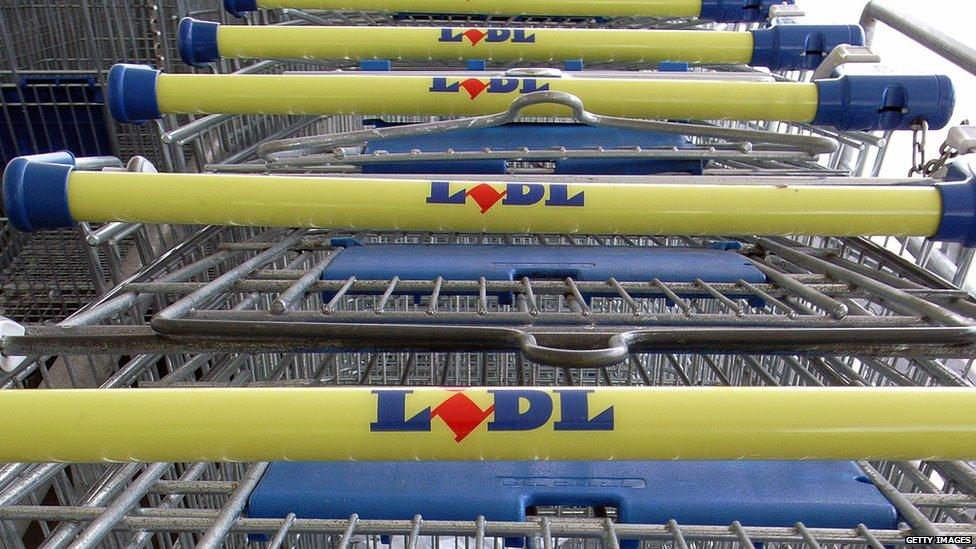Lidl aims to shake off budget image with London stores
- Published

Budget supermarket Lidl is planning to move into central London as part of a plan to shake off its discount image.
The retailer is looking for almost 300 new locations for small to medium-sized supermarkets within the M25.
The move puts it into the heartland of supermarkets such as Waitrose, Tesco and Sainsbury's.
Grocers are under pressure, with Waitrose reporting its first fall in annual sales for seven years on Thursday.
This week Morrisons reported a 47% slide in annual profits, as well as the sale of 140 convenience stores.
Analysts say Lidl is simply extending a plan that has been in place for several years as it moves more upmarket.
David Gray, retail analyst at Planet Retail, said: "This is part of an ongoing strategy, with Lidl putting in more premium ranges, more fresh bakery products, more brands, to make it more like a mainstream supermarket."
Last week its stores introduced 60 new lines to its "Wine Cellar" concept, all from France, including less well-known wines such as Arbois, and a white ChĆ¢teauneuf-du-Pape.
New headquarters
Lidl has just under 4% of the UK grocery market and last year turned over a record Ā£4bn - 21% higher than the previous 12 months.
It has also bought a five-acre site in southwest London at Tolworth for a new headquarters.
It plans a 220,000 sq ft building that will accommodate more than 750 people - double the size of its existing base in Wimbledon.
But Mr Gray added: "They are not there yet. Lidl is still a discount store, with a limited range, and shelf-ready packaging.
"You still do your main shopping at Tesco or Sainsbury and then top up at Lidl. You don't do your main shop there."
Change of image
There are signs that Lidl's plan to change its image is working. Advertising group Havas last month put Lidl - and its rival discounter Aldi - among the UK's "Top 10 most meaningful retail brands", above Tesco, Asda and Morrison's.
Mr Gray said that Lidl's strategy was a gamble because its model was based on low-cost out-of-town sites and moving into central London could be far less profitable.
"I can't see them moving into the heart of central London. They will end up with smaller shops - they'll end up with convenience stores, which are a high-cost business model where it's a lot harder to make money."
- Published12 August 2015
- Published23 January 2015
- Published10 September 2015